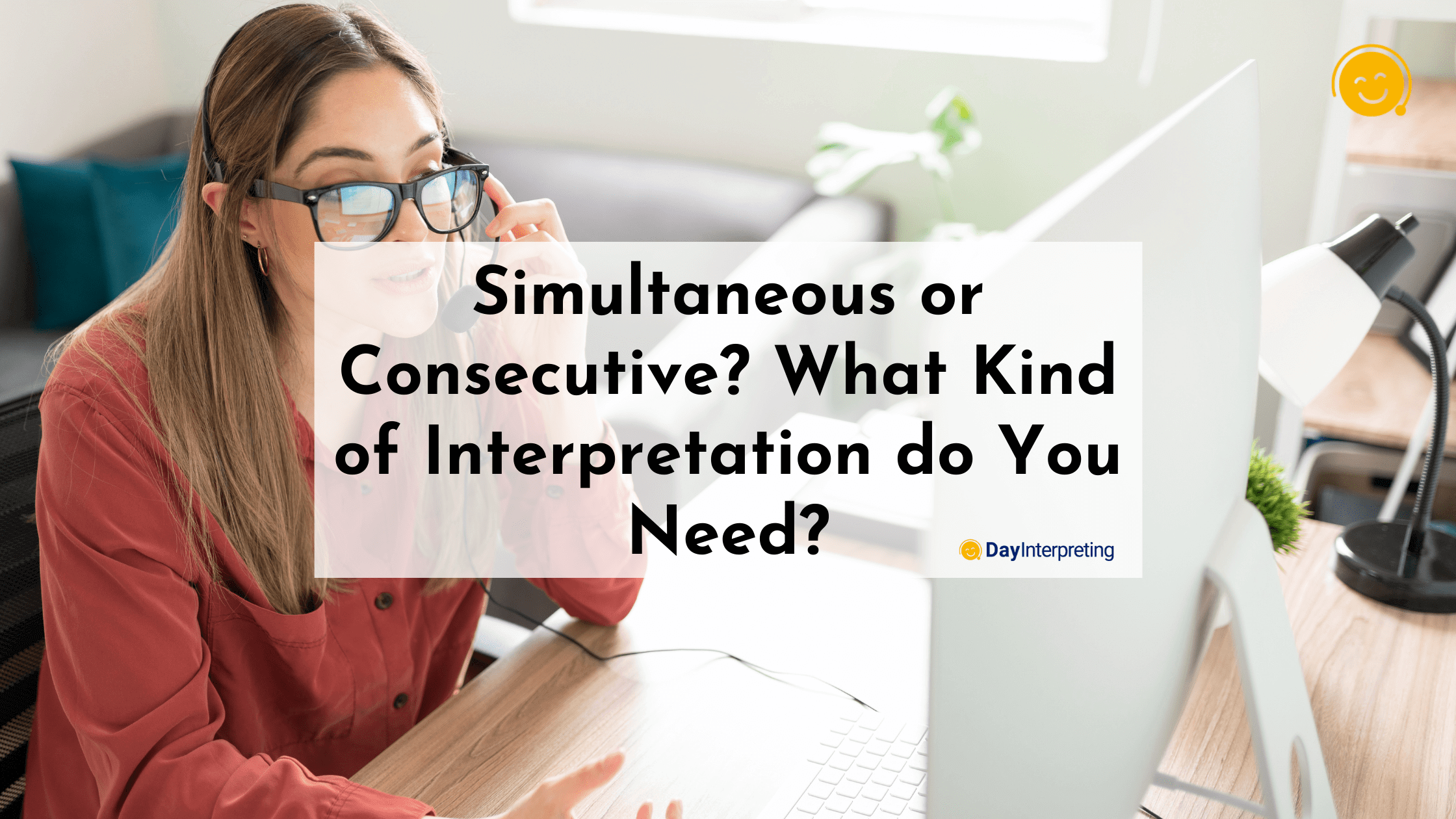There are plenty of practical reasons for using interpretation. With the drastic increase of hybrid events featuring audiences from all across the world, what kind of interpretation you use is more important than ever to ensure your message doesn’t get lost in translation.
You already know that interpreting refers to the translation and cultural adaption of spoken language from one language (source) to another (target). But did you know that there many different kinds of interpretation?
That being said, do you know what kind of interpretation services are right for your business? What are the most common types of interpreting? And more importantly, when is the best time to use them?
Read on if you’re keen to learn more about the two major types of interpretation!
What Kind of Interpretation Does Your Business Need? Here are the Options!
Simultaneous Interpreting
Short and Sweet: Word-for-word translation
Detailed Explanation:
Simultaneous interpreting is arguably the most widely used in the business world. This type of interpreting sees an interpreter translating the speaker’s words in real-time. Interpreters translate the speaker’s words as they’re spoken. This ensures that the audience can follow the conversation even if they don’t understand the speaker’s language.
The terms conference interpreting and simultaneous interpretation are often used interchangeably nowadays. And the reason why it’s so popular isn’t hard to understand. Listeners hear the interpreter through receiver headsets. Although this kind of interpretation might be highly reliant on technology and sound equipment, it is definitely favored.
Consecutive Interpreting
Short and Sweet: Summarizing the idea.
Detailed Explanation:
Consecutive interpreting sees an interpreter translating “paragraphs” of context at a time. Instead of translating the speaker’s every word, consecutive interpreters listen to a few sentences before translating them to the target language.
Consecutive interpreting works well for smaller events and one-on-one conversations. You can use this kind of interpreting for interviews, HR meetings, PTA conferences, court depositions, client-attorney meetings, and medical consultations.
What’s the Big Difference?
The difference between simultaneous and consecutive interpreting lies in how the comprehension phase is separated from the message playback (or translation) phase. Simultaneous interpreters work at lightning speed. But with consecutive interpretation, there is more time to understand the message. Interpreters analyze any cultural conflicts, and translate the message to the audience.
Consecutive interpreting flows more like a conversation. It allows the speaker and audience members to speak without being interrupted by an interpreter. The downside is that these interpretations take twice the amount of time compared to simultaneous interpretations.
Consecutive interpreters have more control over the situation to clear up ambiguities and any terms that might not make sense. Simultaneous interpreting, on the other hand, saves time. It ensures that everyone can immediately hear what the speaker says without waiting for an interpreter to deliver the message.
Choosing the Right Kind of Interpretation
In general, a consecutive interpreter is recommended for medical settings, court interpreting, and on-site facility tours. In scenarios like these, there are many opportunities for natural pauses in the conversation.
Simultaneous interpreters are recommended for conferences where there is only one speaker. It’s beneficial at international events where more than two languages are spoken. If your event demands a quick relay of data, simultaneous interpreting is the ideal fit.
If you’re still wondering whether to use simultaneous or consecutive interpreting or perhaps considering another route, rest assured that there is an interpreting format that’ll fit your unique needs and make your message matter in any language!
The team of professional linguists at Day Translations and Day Interpreting will analyze your business needs and come up with a comprehensive solution to not only meet but exceed your expectations.





0 Comments